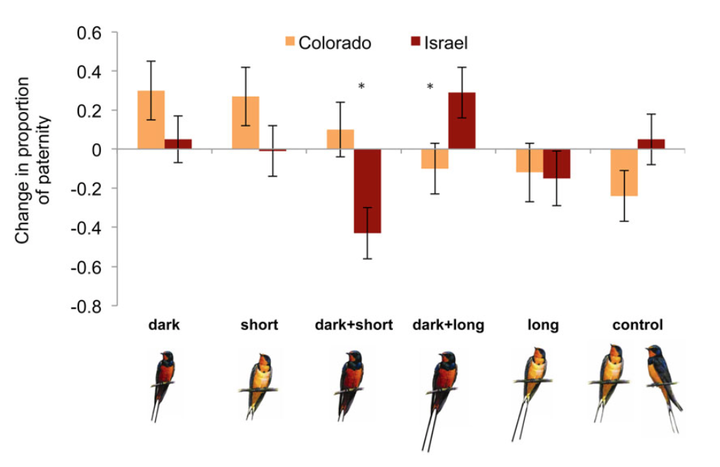The maintenance of phenotypic divergence through sexual selection: An experimental study in barn swallows Hirundo rustica

Abstract
Previous studies have shown that sexual signals can rapidly diverge among closely related species. However, we lack experimental studies to demonstrate that differences in trait-associated reproductive performance maintain sexual trait differences between the two closely related populations, in support for a role of sexual selection in speciation. Populations of Northern Hemisphere-distributed barn swallows Hirundo rustica are closely related, yet differ in two plumage-based traits: ventral color and length of the outermost tail feathers (streamers). Here we provide experimental evidence that manipulations of these traits result in different reproductive consequences in two subspecies of barn swallow: (H.r. erythrogaster in North America and H.r. transitiva in the East Mediterranean). Experimental results in Colorado, USA demonstrate that males with (1) darkened ventral coloration and (2) shortened streamers gained paternity between two successive reproductive bouts. In contrast, exaggeration of both traits improved reproductive performance within H.r. transitiva in Israel: males with a combination treatment of darkened ventral coloration and elongated streamers gained paternity between two successive reproductive bouts. Collectively, these experimental results fill an important gap in our understanding for how divergent sexual selection maintains phenotype differentiation in closely related populations, an important aspect of the speciation process. This article is protected by copyright. All rights reserved